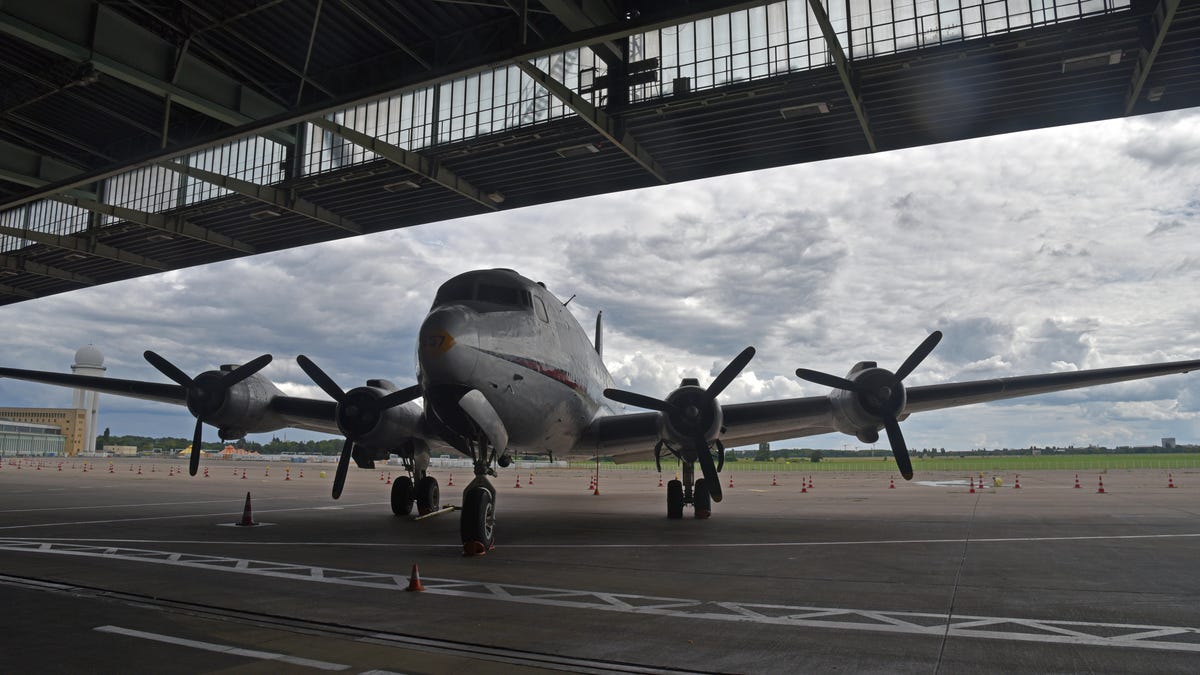Berlin's closed, creepy and amazing airport
Once one of the largest buildings in the world, the terminal at Berlin's former Tempelhof Airport played many roles in history, from symbol of Nazi power to vital link in the Berlin Airlift.

With two currently serving the city and another forever under construction, Berlin is not short on airports. But the most fascinating of them all permanently closed its runways almost a decade ago.
Located in the southern half of the former West Berlin, Tempelhof Airport was one of the city's main gateways from 1923 to 2008. During the latter half of its life it served only passengers, but in its earlier years it played the roles of a symbol of Nazi power, a World War II aircraft factory and a crucial link in the Berlin Airlift.
Following IFA earlier this month, I visited the former terminal on a guided tour. It gave an in-depth look at a vast building not just laden with history, but also one that influenced design of the modern airport.
Immense and incredible
Today, most of the 877-acre site of Tempelhof is a park, making it slightly larger than New York's Central Park and almost twice the size of Monaco. That such a huge plot of land in the middle of Germany's capital and largest city was saved from development remains a remarkable and contentious achievement. The terminal complex sits on the northwest corner of the field, towering over inline skaters racing on the old runways and picnickers relaxing on the grass.
Formerly one of the largest buildings in world, the terminal is a labyrinth that sprawls across a bewildering 3.2 million square feet and 9,000 rooms. In the first decade after Tempelhof's 1923 opening, passengers used a much smaller collection of buildings near the center of the airport that gradually expanded as traffic grew. This was the era of passenger Zeppelins and plodding propellor aircraft like the Junkers G 24 (operated by what was then Deutsche Luft Hansa) flying between German cities.
But as they did with everything else in Germany, the Nazis completely transformed Tempelhof when they came to power in 1933. Adolf Hitler picked the airport as the world's entry point for what he envisioned as a completely reconstructed Berlin. Architect Ernst Sagebiel was charged with designing a new terminal that would reflect the power of the Nazi regime and the glory of a new Germany.
A quick construction
Construction began in 1936 and proceeded rapidly, with much of the building completed by the time World War II began in 1939. A grand opening was set for the same year, but the war canceled those plans and the last touches on the building were abandoned. Ironically, Tempelhof was never used as an airport during the war and was only finished after the US military took over Tempelhof after it was briefly occupied by the Russians following Germany's surrender.
Tempelhof's main passenger hall is a stunning space.
Power, or reflecting is it at least, is absolutely one area where Sagebiel succeeded. The building's scale is so immense that you can't help but feel small and overwhelmed by it. Parts of it are also unused, which left me with a decidedly eerie feeling of being the last person on Earth. If a zombie had suddenly popped out of the baggage claim, I wouldn't have been surprised. Walking around, you might even recognize it as a film set. Still, it doesn't feel completely abandoned as it in fact now houses more than 100 tenants, from offices of Berlin's police force to a male strip club.
Guided tours in English take place on Wednesday, Friday, Saturday and Sunday at1:30 p.m. (German tours are more frequent.) Tickets for the two-hour tours are 15.00 euros for adults, 10 euros for students and 7 euros for children, ages six to 14. You can buy the tickets online or just show up.

